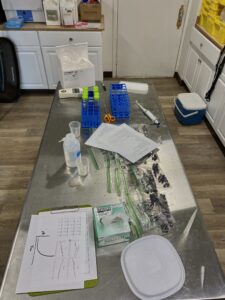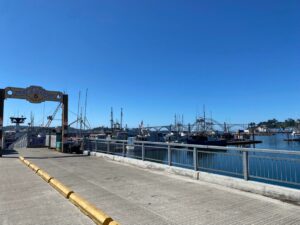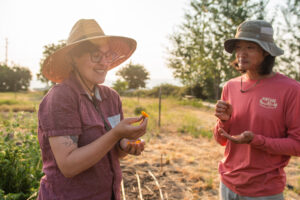Greetings fellow farmers and lovers of Agriculture!
My name is Mia Claire Koljian and I am one of the summer interns for the Oak Creek Center for Urban Horticulture at Oregon State University. I am currently a senior working on my bachelors degree of science in botany with a concentration in ecology, evolution, and conservation. I am located in Corvallis and I am hoping to obtain a master’s in plant pathology. In my future I see myself working in environment stability by studying and preventing plant diseases. I have a goal of working in laboratories to study invasive pests and pathogens and their impact on the environment they are in.

When going into the summer term I knew that I wanted to be working on a farm, and I was very lucky to be provided the opportunity to work on the Dry Farm through the Extension Service Program at the Oak Creek Center for Urban Horticulture. So what is Dry Farming? Dry farming is crop production without irrigation during a dry season. It is a practice that emphasizes production and growth with as little intervention as possible. I have greatly enjoyed my time working on the dry farms so far and have been extremely supported as a worker by my supervisor Lucas Nebert. Under Lucas’ guidance I have learned so much about the processes of the dry farm and all the foundational techniques of farming. It is a goal of mine to become more knowledgeable in the processes of organic farming and working on plots of land, and I feel that I am able to achieve this with the Dry Farm Program.
So far we have been doing necessary upkeep of the land like weeding, pruning, and planting. One of my favorite tasks that I’ve been working on is planting cucumber melons next to the pollinator garden at the Oak Creek Center for Urban Horticulture. Starting your mornings by being out in the sun and listening to the sounds of nature has been such an excellent time for me. One of the other tasks I have enjoyed doing is assisting my supervisor Lucas with his project on studying drought resistant corn. The working hypothesis is that by inoculating a corn plant in its early stages with an endophyte, it will be able to assist the corn plant in becoming more drought tolerant and being able to grow and produce a fruiting body under those conditions. Endophytes are bacteria or fungi that live between living plant cells. They can have symbiotic relationships and aid in stress tolerance for the plant. I have found this very interesting to work with because it can provide foundational work for what I want to study in my future career. I am hoping to learn more information about organic farming plant microorganisms during my time with the dry farm.















